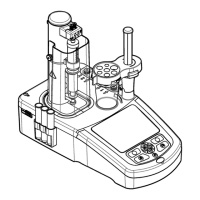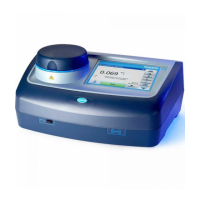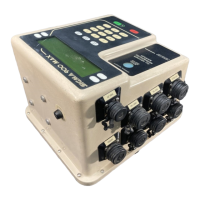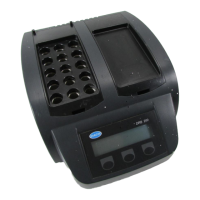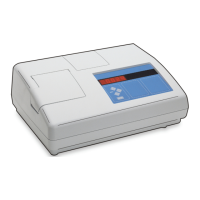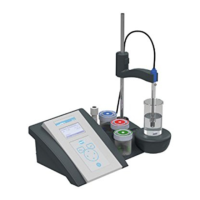AutoCAT 9000 Validation Study
AutoCAT 9000 Validation Study
50081_AutoCAT 9000 Validation Study.fm Page 163
For low-range determination of total chlorine, the instrument thus appears to be suitable
for facilities that are required to meet NPDES discharge limits, in the low µg/L range, as
determined by 40 CFR, Part 136, Appendix B.
A proposed revision to this statute was published in March 2003. This Proposed Rule is
written with more specific language covering the determination of the Minimum Level
of Quantitation (ML), in addition to the method detection limit (MDL). Applying this
calculation to the instrument MDL of 1.2 µg/L, the ML for this instrument is determined
to be 3.8 µg/L, based on the seven replicates tested.
*
Many facilities have budget constraints, and would prefer that instrumentation cover not
only very low concentration ranges, but additionally are suited for higher concentration
range determinations, at the various points of process that require mg/L concentrations of
disinfectant for the control of biological growth. Using the same normality of titrant, the
test instrument is capable of measuring chlorine concentrations of up to 5 mg/L.
Additionally, the instrument will automatically correct for sample dilutions, enabling
determinations above this stated range.
An assessment of the instrument was conducted in drinking water and municipal
wastewater discharge waters. The percent recoveries for the various amperometric
titration methods, in these sample matrices, are summarized in Table 2.
*.US EPA, 40CFR Part 136, "Guidelines Establishing Test Procedures for the Analysis of
Pollutants; Procedures for Detection and Quantitation", RIN 2040-AD53, Federal Register,
Vol. 68, No. 48, Proposed Rules, March 12, 2003.
Table 2 Percent Recovery in Drinking Water and Wastewater
Method Sample Type Spike Level, mg/L Cl
2
Average %
Recovery
% Recovery Range
Free Chlorine Drinking Water
Free Cl
2
at 0.060 mg/L
92.6 (n=4) 87.5—98.0
at 0.220 mg/L 89.7 (n=6) 89.2—92.7
at 0.530 mg/L 91.0 (n=4) 85.4—93.5
Total Chlorine Forward
Drinking Water
Free Cl
2
at 0.196 mg/L
101.2 (n=4) 100.3—101.9
at 0.391 mg/L 99.8 (n=4) 99.0—100.4
NH
2
Cl
at 0.196 mg/L
93.4(n=4) 93.0—93.9
at 0.391 mg/L 93.5 (n=3) 93.0—94.0
Denitrified WasteWater
Effluent (Source #1)
NH
2
Cl
at 0.489 mg/L
87.3 (n=6) 82.2—90.7
at 0.975 mg/L
at 1.459 mg/L
Denitrified WasteWater
Effluent (Source #2)
NH
2
Cl
at 0.489 mg/L
93.6 (n=6) 88.8—95.8
at 0.975 mg/L
at 1.459 mg/L

